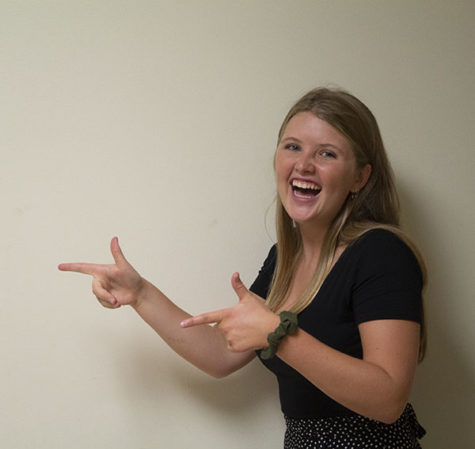Wndr museum displays wndrful creations
March 5, 2019
In most museums, taking photos is discouraged so that guests can fully absorb the arts beauty. In contrast, the Wndr museum encourages guests to take countless photos because the people contribute to the art.
The Wndr museum was originally a pop-up exhibit but it was declared a permanent museum on Feb. 19 because of its popularity. Wndr is located at 1130 W. Monroe St., Chicago, in the trendy neighborhood of the West Loop, which fits well with the theme of the museum.
The museum’s purpose is to shock guests with illusions and allow people to dig into their imagination. For me, the museum did just that. The museum has 19 experiences, each designed for unique photos. My personal favorite was a room where two people stood in opposite corners. Seemingly, you were posing for a normal photo, but really one person appeared extremely tiny and the other abnormally large. With the eccentric backgrounds and lights, every photo felt special.
Other sections of the museum included mirrors, colorful lights, floating balls, wires, balloons and much more. The famous Japanese artist, Yayoi Kusama’s, piece “Let’s Survive Forever” can be found in the museum. The art includes mirror walls with mirrored balls hanging from the ceiling allowing you to be seen multiple times in photos.
While every section was picture worthy, the museum was also informative. Throughout the museum there was information about how our minds work and fun facts about things such as sound. One area of the museum had wires hanging from the ceiling in the shape of a cylinder. Guest were advised to put a soup can to their ear and listen to the sounds coming from the wires. Later, we found out the sounds were sent into space in the ’70s to enlighten aliens about what Earth sounded like. I found it fascinating that wires could carry such profound sounds like music from the ’70s and I was further amazed that these sounds were sent into space about 50 years ago.
I was further satisfied with the efficiency of the museum. The wait to get into exhibits was never longer than five minutes and plenty of people were there. Moreover, I did not feel rushed. The amount of time you spent in each section was a perfect amount of time to fully experience the art as well as take pictures.
Although the Wndr museum offers new experiences in the art world, the tickets were slightly overpriced. Tickets for the Wndr museum cost $32, while all-day passes for the Art Institute of Chicago for those ages 18-64 cost $35, $29 for those ages 14-17, and are free for children under 14. The cost is almost the same for both museums, but the Wndr museum compared to the Art Institute of Chicago is much smaller, with much less art to be seen. Furthermore, the time you spend in the Wndr museum is limited to around 60-90 minutes with a designated entrance time. Of course, the reason for the price has to do with the trendiness and originality of Wndr, but it is still very expensive for that quick of an experience.
Lastly, the Wndr museum did not offer parking. I had to reserve a spot in a parking garage a few blocks down. With parking being so difficult to find in the city, as well as an additional cost, I feel it would be beneficial for the museum to add a parking spots, or include parking tickets in the overall price.
Overall, I was very pleased with my experience at the Wndr museum. Because guests were included in the art, I was able to take many photos while still remaining in awe and engaged with the artwork. The Wndr museum opened my eyes to many “wonders of the world.”





















![Movie poster for '[Rec]" (2007).](https://www.lionnewspaper.com/wp-content/uploads/2023/04/rec-640x900.jpg)


